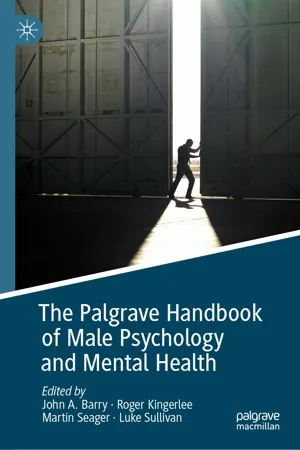Introduction by John A. Barry
Testosterone Impacts Psychology via Various Pathways
The Testosterone Family
Testosterone and Health in Men and Women


This Handbook represents the first concerted effort to understand male mental health in a way that facilitates a positive step forward in both theory and treatment. An alarming number of men experience serious mental health issues, as demonstrated by high rates of suicide and violent offending. Despite these problems, the study of male psychology has either been overlooked, or viewed as a problem of defective masculinity. This handbook brings together experts from across the world to discuss men's mental health, from prenatal development, through childhood, adolescence, and fatherhood. Men and masculinity are explored from multiple perspectives including evolutionary, cross-cultural, cognitive, biological, developmental, and existential viewpoints, with a focus on practical suggestions and demonstrations of successful clinical work with men.
Throughout, chapters question existing models of understanding and treating men's mental health and explore new approaches, theories and interventions. This definitive handbook encapsulates a new wave of positive theory and practice in the field of male psychology and will be of great value to professionals, academics, and those working with males through the lifespan in any sector related to male mental health and wellbeing.
